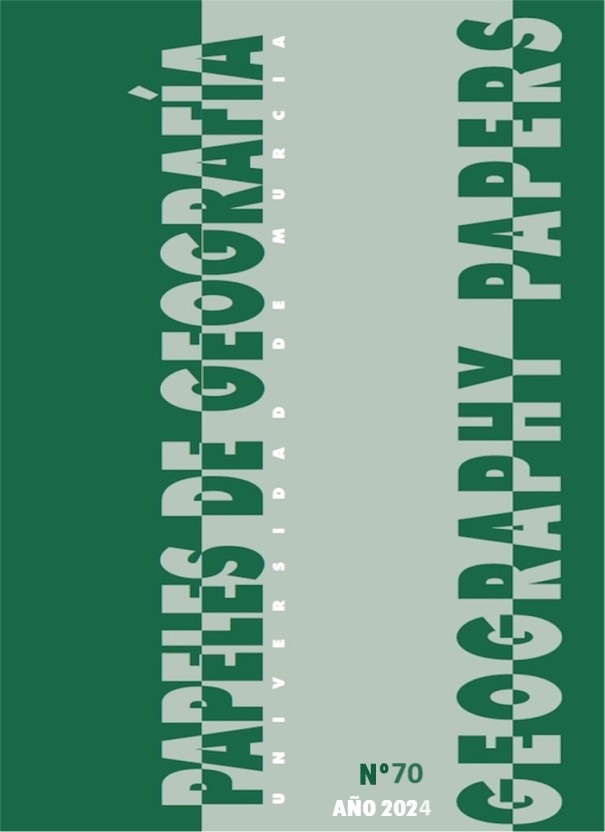IDENTIFICACIÓN DE USOS DEL SUELO EN EL PARQUE OTOMÍ MEXICA A TRAVÉS DE MATRICES DE CONFUSIÓN 2014 Y 2018
Abstract
This research aims to identify and quantify the present land uses through confusion matrices or error matrices, to determine how the distribution of land in the Otomí Mexica Park is structured. The methodology consists of the following stages: 1) Processing of 2014 and 2018 satellite images for preclassification; To obtain less error, methods, techniques and procedures related to geometric correction and atmospheric correction of satellite images were applied; The geometric correction of the satellite images was done using control points. 2) Identification of the types of ecosystems present in the Otomí Mexica park; It was carried out through the validation of the land cover and use maps of the INEGI series IV for the year 2014 and the INEGI series VI for the year 2018 scale 1: 250,000. 3) Evaluation of verification sites: consisted of associating the sampling points based on a main class and an additional class on the map. 4) Verification of data analysis, the verification sites were compared with the categories classified on the maps. This is done using a confusion matrix or error matrix for verification.
Downloads
-
Abstract607
-
PDF (Español (España))250
References
CAMACHO S. (2019) “Alcance descriptivo de los cambios de cobertura y uso de suelo. El caso de la porción surponiente del Estado de México (1989 – 2009)”. Universidad de Quintana Roo, México.
CARD, H. D. (1982) Using Known map category marginal frequencies to improve estimates of thematic map accuracy. Photogrammetric Engineering & Remote Sensing, 48 (3), 431-439
CHUVIECO, SALINERO. (1996) Fundamentos de Teledetección (3ª. Edición) Madrid: Rialp.
CHUVIECO, SALINERO. (2008). Teledetección ambiental: la observación de la tierra desde el espacio (3ra. Ed.) Barcelona: Ariel
CONGALTON, RUSSELL. (1991) A review of assessing the accuracy of classification of remotely sensed data Remote Sensing of Evitonmental 37 (1), 35-46.
EASTMAN, R. (2012) IDRISI Selva. Guía para SIG y Procesamiento de imágenes. Manual versión 17. Argentina Clark Labs.
INSTITUTO NACIONAL DE ESTADÍSTICA, GEOGRAFÍA E INFORMÁTICA INEGI, (2002). “Uso de suelo y vegetación, Serie III en México”. Consultado el 23 de diciembre de 2019 en: https://idegeo.centrogeo.org.mx/layers/geonode%3Ausv_serie3_gcs INEGI, México.
INSTITUTO NACIONAL DE GEOGRAFÍA, ESTADÍSTICA E INFORMÁTICA INEGI, (2015). Guía para la interpretación de cartografía edafológica, Estado de México.
JENSEN JOHN. (1996) Introductory Digital Imagine Processing: A Remote Sensing Perspective (2a. Ed.). NJ.:Prentice-Hall Upper Saddle River
JUAN P.; CAMACHO S.; MAGALLANES M.; JUÁREZ T.; POZAS C.; PÉREZ S.; VILLEGAS M.; GARCÍA L.; VILCHIS O. (2017) “Análisis socioespacial, geográfico, ambiental y ecológico del Parque Otomí – Mexica Estado de México” (CEPANAF) del Gobierno del Estado de México y del Colegio de Ciencias Geográficas del Estado de México, A. C.
- 20-09-2024 (3)
- 20-09-2024 (2)
- 16-05-2024 (1)
Copyright (c) 2024 Geography Papers

This work is licensed under a Creative Commons Attribution-NonCommercial 4.0 International License.
The manuscripts published in Papeles de Geografía are subject to the following terms and conditions:
1. The publishing house of the University of Murcia (Servicio de Publicaciones de la Universidad de Murcia) keeps the copyright of the published manuscripts favouring and allowing the use and distribution of such works under the licence in 2 below.
© Servicio de Publicaciones, Universidad de Murcia, 2011
2. Manuscripts are published electronically under an Attribution Non-Commercial No Derivatives 3.0 Unported Creative Commons Licence Spain (Legal text). Readers are free to copy, use, share and redistribute the material in any medium or format as long as (i) appropriate credit is given to authors and original source (journal, publishing house and URL); (ii) the material is not used for commercial purposes and (iii) this licence and restrictions are stated.
3. Self-archive. Authors are allowed and encouraged to distribute pre-print versions (prior to evaluation) and/or post-print versions (after evaluation and accepted for publication) of their manuscripts. This favours the dissemination and early distribution of scientific knowledge and citing.





